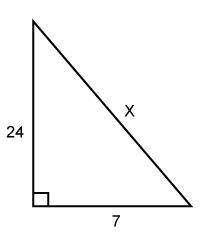
Mathematics, 23.04.2021 04:40 tonytashaqua
Passage 1
Located in Queensland, Australia, the Great Barrier Reef is the world's most extensive coral reef structure. The reef has been evolving for over 15,000 years and is made up of over 3,000 individual reef systems. It covers a total area of 348,000 square kilometers–that's the same size as 70 million football fields! In fact, the Great Barrier Reef is the only living thing that is visible from space. The biodiversity of the reef is remarkable. It is home to many unique ecological communities, habitats, and species. Some of these species, such as turtles and crocodiles, have been around since prehistoric times. The reef contains 600 types of soft and hard corals. It also provides a habitat to 1,500 species of fish. 133 varieties of sharks and rays swim the waters of the reef. The region also hosts a variety of birds, whales, dolphins, and many other species. These species of the Great Barrier Reef and their habitats are deeply interconnected.
Passage 2
On our trip to Queensland, Australia, one thing was certain. Visiting the Great Barrier Reef was going to be spectacular. As soon as we arrived, we decided to take a glass-bottomed boat tour. The guide on the excursion gave us a lot of amazing information about the reef. We didn't realize it was the same size as 70 million football fields! We learned about the long history of the reef on our trip, too. When we spotted a sea turtle, the guide explained how turtles, like crocodiles, have been around since prehistoric times. We also learned about the different types of coral on the reef and the species it provides a habitat to. Not only does the reef have so many different fish, sharks, and rays, but the birds in the area are also unique. The Great Barrier Reef was well worth the trip just to learn about how all the species that call it home are connected.
How does the point of view impact what the reader learns about in each passage?
The first-person point of view in Passage 1 provides information about how the author felt when seeing different species on the reef, while the third-person point of view in Passage 2 provides more scientific information about how the species interact.
The first-person point of view in Passage 1 provides information about the author's personal thoughts when viewing the reef, while the third-person point of view in Passage 2 provides objective information about the size of the reef.
The third-person point of view in Passage 1 provides more specific information about the size of the reef and its species, while the first-person point of view in Passage 2 shares what the author actually saw on the boat adventure.
The third-person point of view in Passage 1 provides more information about what makes the Great Barrier Reef unique from other reefs, while the first-person point of view in Passage 2 shares the feelings the author had while visiting the reef.

Answers: 3
Another question on Mathematics

Mathematics, 21.06.2019 15:00
The radius of the base of a cylinder is 10 centimeters, and its height is 20 centimeters. a cone is used to fill the cylinder with water. the radius of the cone's base is 5 centimeters, and its height is 10 centimeters.
Answers: 1

Mathematics, 21.06.2019 16:00
Find the greatest common factor of the polynomial: 10x^5+15x^4-25x^3 10x^5 x^3 5x^3 5
Answers: 2

Mathematics, 21.06.2019 17:50
(01.02 lc) angle abc has point e on ray ba and point d on ray bc. points e and d are equidistant from point b. to bisect angle abc, which of the following needs to be identified for the construction? the distance between points e and d the point in the angle that is equidistant from points e and d the endpoint of rays ba and bc the point outside of the angle that is equidistant from points e and d
Answers: 1

Mathematics, 21.06.2019 19:30
If 2(a^2+b^2)=(a+b)^2 then, > a+b=0, > ab=0, > a=b, > 2a=b
Answers: 1
You know the right answer?
Passage 1
Located in Queensland, Australia, the Great Barrier Reef is the world's most extensive c...
Questions

Mathematics, 08.07.2019 17:30

Mathematics, 08.07.2019 17:30

Mathematics, 08.07.2019 17:30









Mathematics, 08.07.2019 17:30



Social Studies, 08.07.2019 17:30


Biology, 08.07.2019 17:30


Advanced Placement (AP), 08.07.2019 17:30

Mathematics, 08.07.2019 17:30




